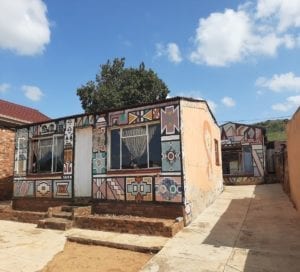Ntombi Kgosana
Phenyo Montsho
Pretoria, South Africa

Traditional circumcision is an ancient and highly secretive practice that serves as a rite of passage and a gateway to manhood in South Africa. It draws hundreds of young men annually, with an array of sacred rituals that affirm masculinity and social responsibility. Known as Ulwaluko in the Xhosa culture, the process uses an assortment of herbs, tools, and a special diet to reduce pain and speed up the healing process. It has also been criticized for the risk of life-threatening complications such as sepsis and bleeding.
In South Africa, traditional male circumcision is performed more commonly in the Eastern Cape Province, one of the most underdeveloped regions of the country. Traditionally, Ulwaluko is hosted in secretive and secluded camps during the months of June and December to make way for school terms. Initiates are taught to embrace but never speak of the events and rituals. In these camps, adolescent men are circumcised outside of biomedical care.1 When the rituals are completed, the camps are destroyed with fire. From a medical perspective, traditional circumcision is dangerous: the initiate is at risk of communicable diseases, HIV/AIDS, septicemia, and penile bleeding and amputation. For an initiate with a bleeding disorder such as hemophilia, the risk is much greater for severe hemorrhage and even exsanguination.
The pressure to be circumcised in South Africa is immense. As an age-old tradition, Ulwaluko is the ultimate mark of masculinity. Those who skip the ritual are disregarded as men. This social pressure hence triggers adolescent boys to partake ignorantly in the ritual, often without consultation with their parents, in order to gain societal respect. The social construct has gained greater traction than the consideration of health challenges that may come with the ritual. In addition to this, if a blood transfusion was needed, blood donation is frowned upon by many cultures and the high rate of HIV in the region also limits the donation pool.

Dr. Ephraim Mabena, the founder of the Mothong African Heritage Project (University of South Africa), disagrees that circumcision performed in the traditional setting of initiation schools is dangerous for men, even those with hemophilia. He blames bogus initiation schools and untrained practitioners in African herbalism as the root cause of increased hospital admissions from traditional circumcision. He explains that in registered initiation schools, enrolled persons must inform leaders of the school of medical conditions and preferences three days before beginning school. All learners are advised to consult a general practitioner to identify medical conditions such as hemophilia.
Mabena went on to explain that some students do not disclose their conditions, which makes it hard to ensure safe proceedings. Students who have hemophilia are not sent home, but are treated carefully with an herbal medicine known as Mathunga to stop the bleeding. Even though the efficacy is unproven, Dr. Mabena remains supportive of traditional circumcision as a safe cultural identity act and right.
In the age of decolonization, many people seek ways to revert to true African culture. Western aid is rejected as many continue to strongly believe in traditional methods. Furthermore, the grim history of Apartheid leaves Western practices undesirable. Freedom of religion and culture is a democratic right in the Constitution of the Republic of South Africa,2 allowing the recognition and practice of customary processes to occur.
Basic health lessons should be taught to parents and secondary-school learners. The South African government has instituted a registration platform for initiation schools, though many go under the radar. This will enable more informed decisions when applying for initiation school. Collaboration between registered traditional healers and physicians would help to ensure medical fitness for all learners who will be circumcised. For those unable to afford the expense, a subsidy could be raised to ensure these services for all. Lastly, there should be strict policies and consequences for those who practice outside official regulations.
End notes
- Behrens, K. G. (2014). Traditional male circumcision: Balancing cultural rights and the prevalence of serious, available form. South African Medical Journal, 104
- Section 15 of The Constitution of The Republic Of South Africa, 1996
NTOMBI KGOSANA is a Bachelor of Nursing Honours (BNurs Hons) student in the Faculty of Health Sciences, in the University of Pretoria. She’s a member of the Golden Key International Society and has been active in various student organizations on campus. This includes being the chairperson of the nursing department as well as founding HandOver, a nursing students magazine in the Health Campus. This is her first academic writing piece.
PHENYO MONTSHO is a Masters Candidate in the Faculty of Theology and Religion in the University of Pretoria, where he attained his Bachelor of Theology and Honors. He is a member of the Golden Key International Society, with an array of involvement in student activities, most recent being serving as Student Representative Council’s Treasurer General, the highest student governance body in the university. His current masters focuses on religion and sustainable development in Sub-Saharan Africa, with only one paper submission in the same theme.
Submitted for the 2019–2020 Blood Writing Contest

Leave a Reply